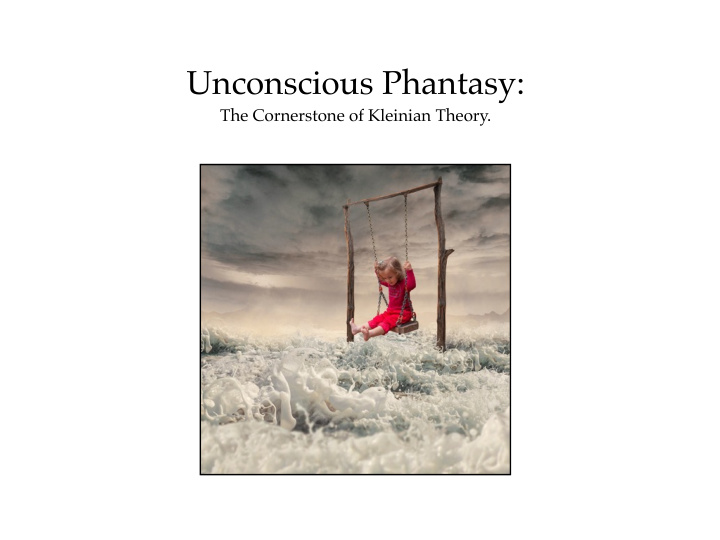



Unconscious Phantasy: The Cornerstone of Kleinian Theory.
• Phantasy is the primary content of all mental processes by which the primitive ego prepares the mind to be able to channel itself. • “Ph” is used instead of “F” to distinguish this concept from daydreaming or imagining.
Freud’s Notion of Primary and Secondary Thought Processes • Primary thought process is a non- rational mental activity. It’s not based on external reality, but rather, it is based on what is desired, on omnipotent fantasies, and on elaborations of wishful experiences. • Dreams are phenomena of primary thought process. • Freud linked this primary thought process that is found in dream’s chaos with infantile mental life. He found that the newborn almost immediately develops links between pleasurable experience and the satisfying object.
Phantasy as defined by Susan Isaacs • “Phantasy is the mental corollary, the psychic representative of instinct… in the face of painful need, the infantile body together with the wishing, instinctual psyche, produces a particular phantasy.” • Phantasy creates the earliest system of meaning in the psyche, even if it is irrational, chaotic, and omnipotent.
Klein When the baby desires the mother, • he experiences this as, “I want to suck the nipple,” “to stroke her face,” “to eat her up, to keep her inside me.” Negative expressions are • experienced as, “to bite the breast,” “to tear to bits,” “to throw her out of me.” As the ego develops, a true relation • to reality is is gradually established out of this unreal, sensory based reality.
Unconscious phantasies are understood to be “ingested” parts of the world, or “ingested” aspects of the mother, repeatedly taken in by the psyche through exchanges with the actual mother, and absorbed into the baby’s growing identity.
A flow of information from the world to the psyche is constant and continuous and affects instinctual energies. The concept of an early ego also suggests an added function to phantasy: to aid the ego in organizing activities by imagining and hallucinating such activities.
Internal Objects • I n essence, an “internal object” is a mental and emotional image of an external object that has been taken into the self. The character of the internal object is colored by aspects of the self that have been projected into it. Most importantly, internal objects are those derived from parents, particularly mother or mother equivalent and breast or breast equivalent. • The infant projects both its loving (life instinct) and hating (death instinct) affects into the object, and then introjects back into itself the “object” which is then experienced physically as “good” (providing satisfaction or relief) or “bad” (causing hunger or pain).
Internal objects are experienced as relating to each other within the self. In Kleinian theory, the dynamic relationship between internal objects is the defining feature of psychological functioning. • Good objects allow individual to cohere and integrate experience. • Damaged or “dead” internal objects cause anxiety and disintegration.
Recommend
More recommend